For all the dogs who've touched our hearts
Chocolate, friction and behaviour change
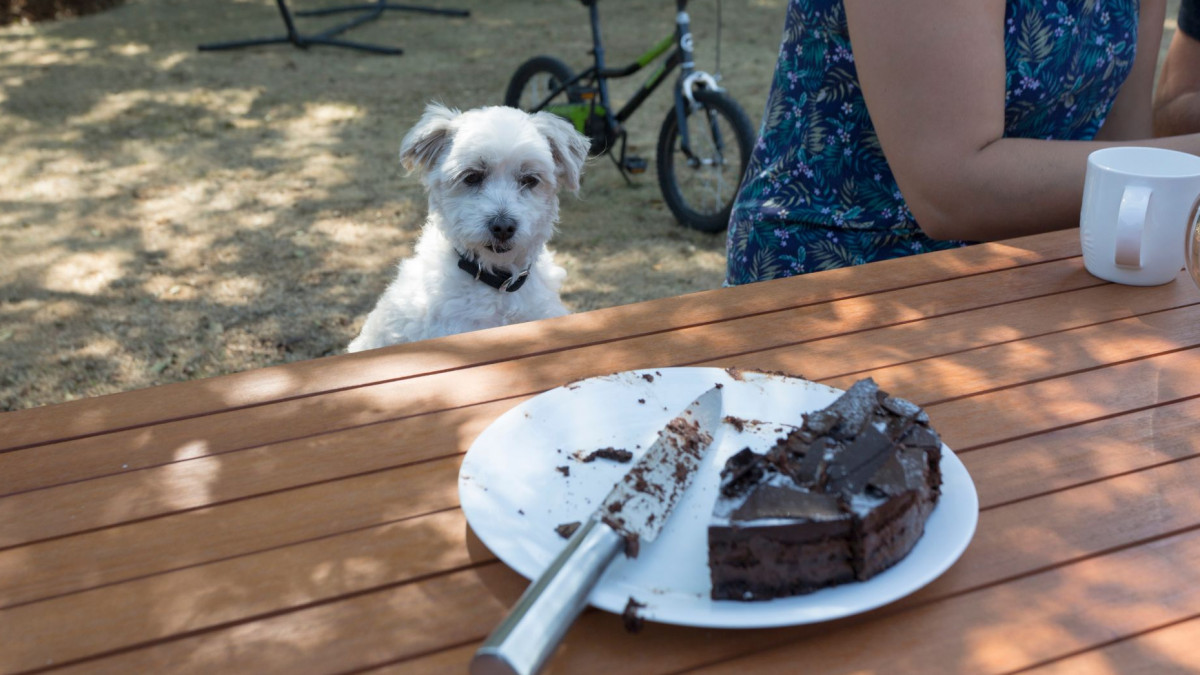
We teach dogs in order to change their behaviour, but what we do is as important. in this blog I explore how we can use friction in behaviour change.

I can't reach the chocolate!
I have a love hate relationship with chocolate. I love chocolate, but hate the way it’s made my waistline expand. I’ve gone the “Never gonna have chocolate ever again” route, but ended up feeling deprived and binging.
I tried buying dark chocolate which I don’t find as addictive, but although I ate less in one sitting, each time I opened the pantry I’d grab a square or two. Over the day I’d eat half a block (or more).
During one of my research rabbit holes, I came across a behavioural science concept called friction. Put simply friction is created by anything that gets in the way of doing a behaviour, such as not enough time, money, energy or space.

Make a behaviour harder - add friction
Having chocolate in the pantry was doomed to fail, each time I opened the door it was right there. I had to rely on “will power” or motivation – ugh.
To make the behaviour of eating chocolate harder, I added friction by putting it in a cupboard out of my reach. It was so high I needed a chair, step ladder or taller person to reach it.
To my great delight this worked! Most of the time I simply forget the chocolate is there and enjoy a few pieces after dinner when my husband makes me a cuppa.
If you want to make a behaviour less likely to happen, add friction.
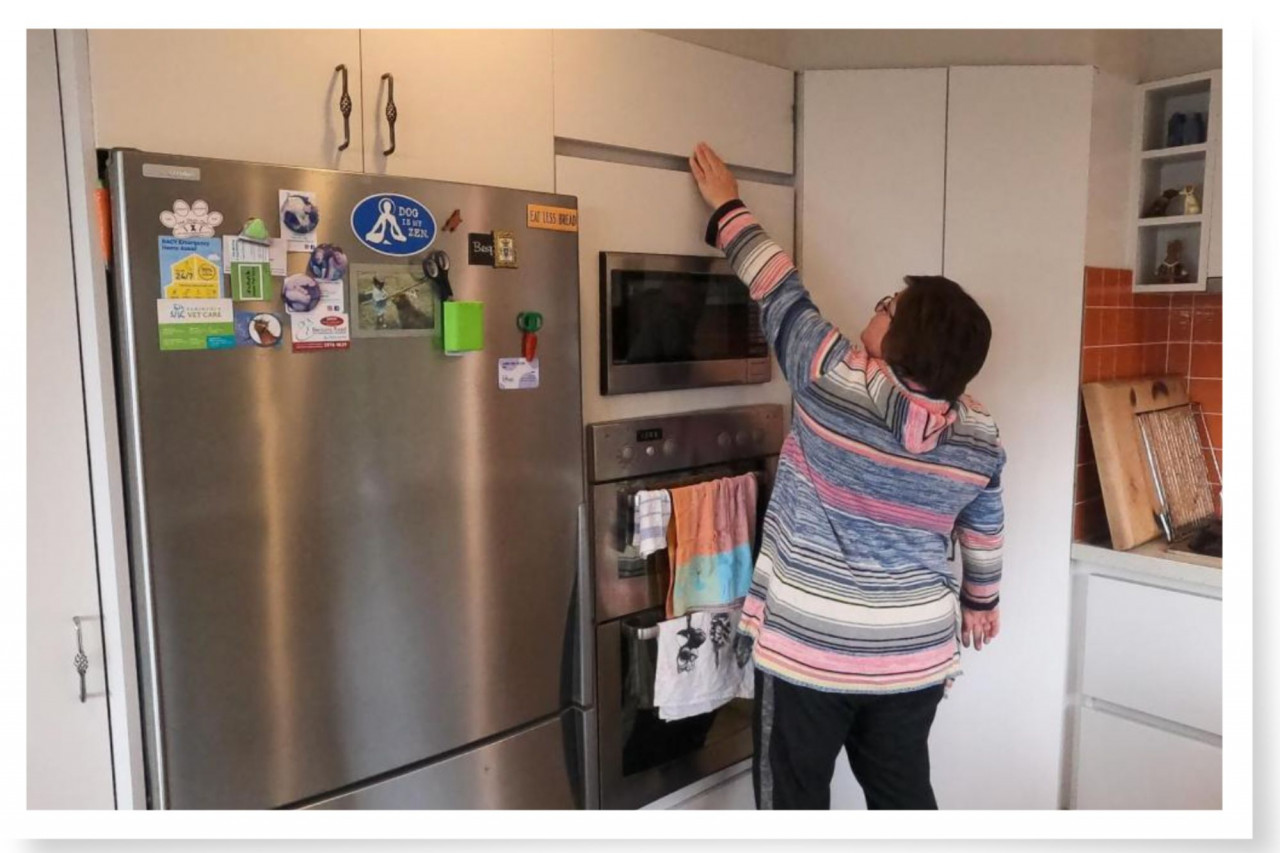
Yes, it’s a bit frustrating – but that’s the point!
Make a behaviour easier - reduce friction
Sometimes you want to make a behaviour more likely to happen.
A few years ago, my husband started working from home and needed an office. We agreed our bungalow was the best option, but I’d been using it as my training space. It had worked well; there was a small fridge for wet training food, all my gear was close at hand and I could lock non-working dogs outside. There was very little friction in training my dogs and we did so on most days.
Now I train wherever I can find a space and whenever there aren’t too many people around. I’m never sure where or when this will be, so I have gear all over the place. My house is multi-story and on a hill, it’s quite a trek from the backyard to the kitchen if I’ve left something upstairs. Although not impossible to gather it all together, it takes extra time, planning and effort which creates friction.
There have been times I’ve given up on training and just had a big play instead.

What can I do to make training easier?
If you want to increase behaviour reduce friction, so here are the steps I'm taking:
Pre organise training food
I keep pots of their dried food around the house ready for an impromptu session.
Before we walk, I chop up a good quality dog food roll to take with us. They love this food and it’s perfect for training, I cut up extra so it’s ready for the next day’s sessions.
Find the best possible space
I’d stopped training on my outside deck because the food falls through the cracks. It’s not great for a dog to lose their food while training because it can cause them to sniff around. It is, however, the best place I have right now so we’ll use it.
Keep all the gear in one spot
Now I have a place to train, I can stash all the relevant gear there for quick and easy frictionless access. Because it’s together it’s easy to gather up and move somewhere else when it’s time to generalise the behaviour.

It's working!
I’m happy to report this is working, I’ve had wonderful training sessions in the past couple of weeks.
There are things that need refining but that’s also part of behaviour change. Behaviour is never static, it constantly evolves to suit changes around us – that’s it’s special function.
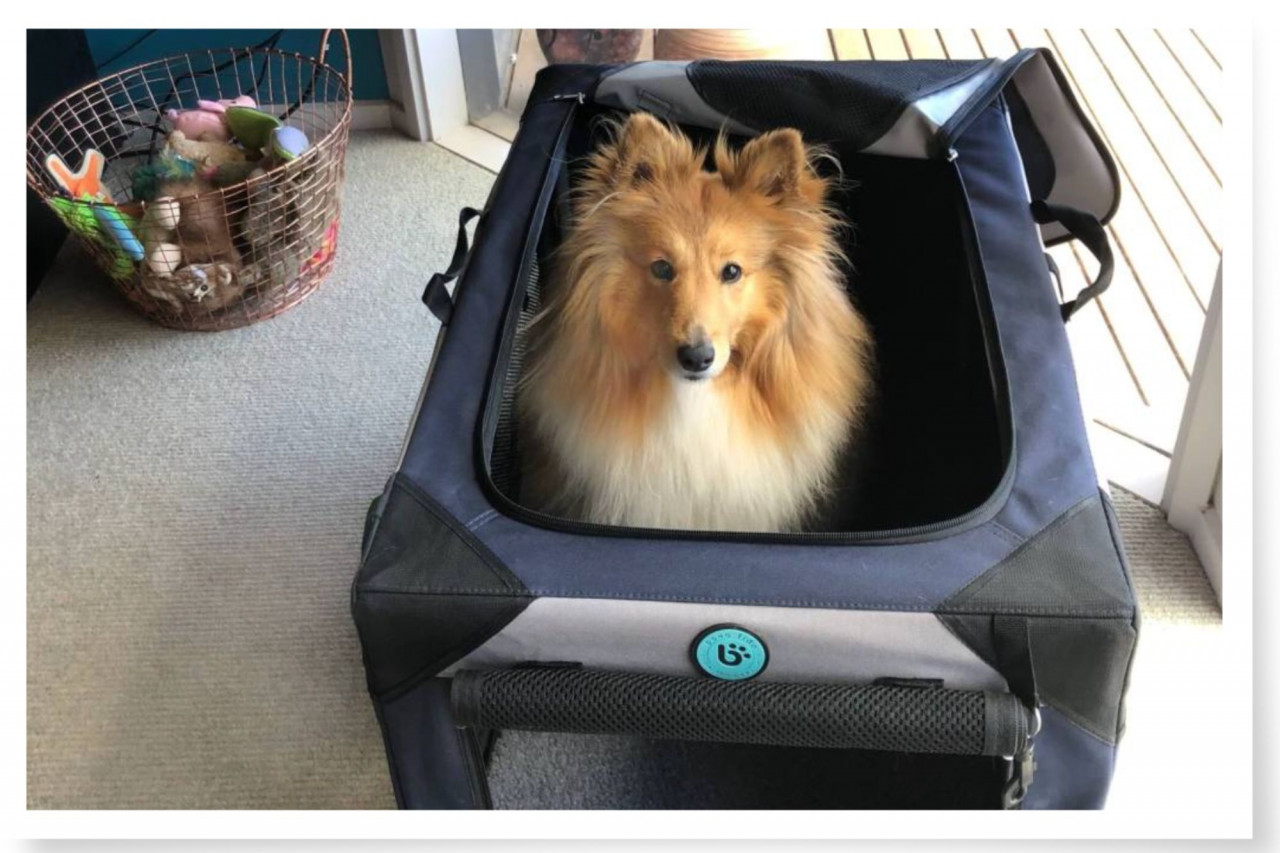
Dear little Bonnie, ready and eager for her training session.

Think about friction when training your dog
Understanding the concept of friction can help our dogs learn effectively too. Next time you teach them, ask if anything is getting in the way:
Is the environment appropriate – is it safe and quiet enough for your dog?
Are they comfortable, ready, happy, and well?
Do they like the food you’re using?
Are you clear enough with your body language, verbal, physical or prop cues?
If your dog is reluctant or doesn’t do what you ask, first consider what might be creating friction – and remove it.

Further reading
Choose the Path of Least Friction to Change Your Behaviour
Tiny Habits Behavior Model, BJ Fogg
Forget big change, start with a tiny habit: BJ Fogg TED Talk

You might also like



Comments
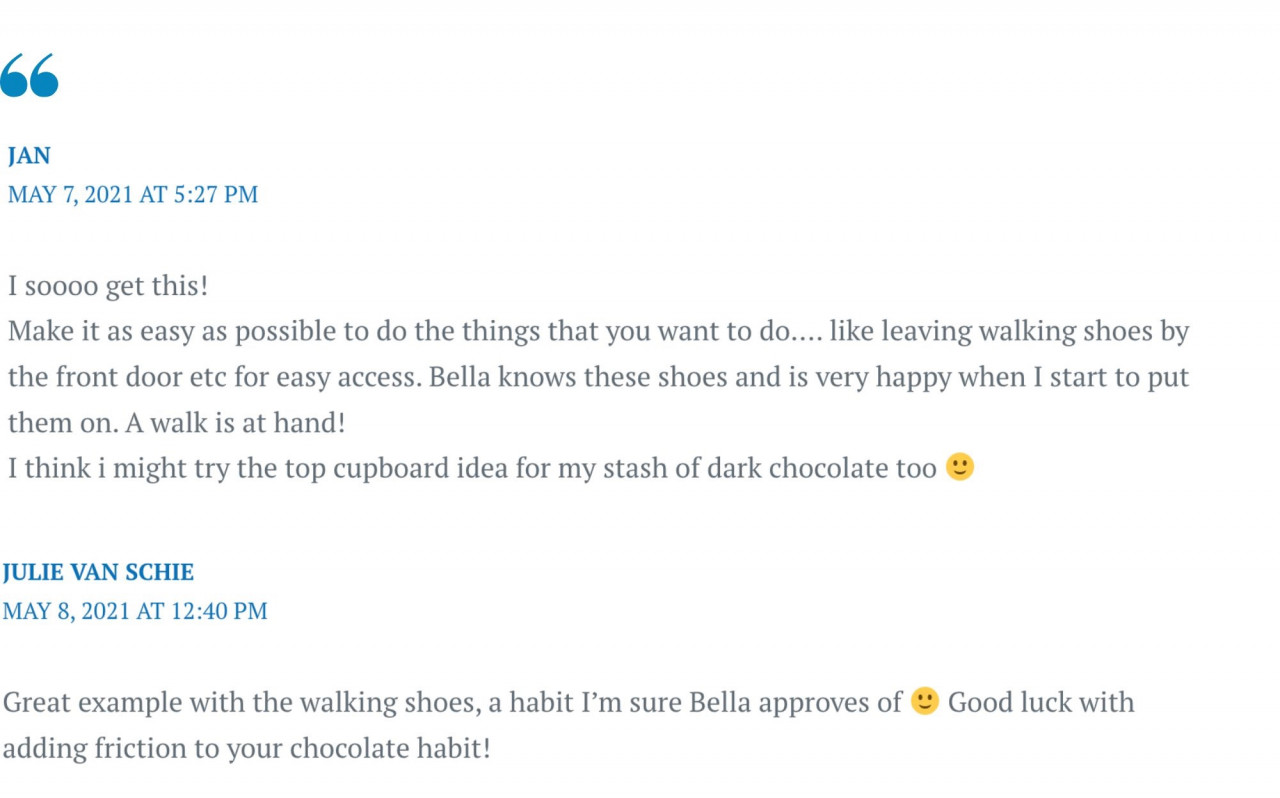
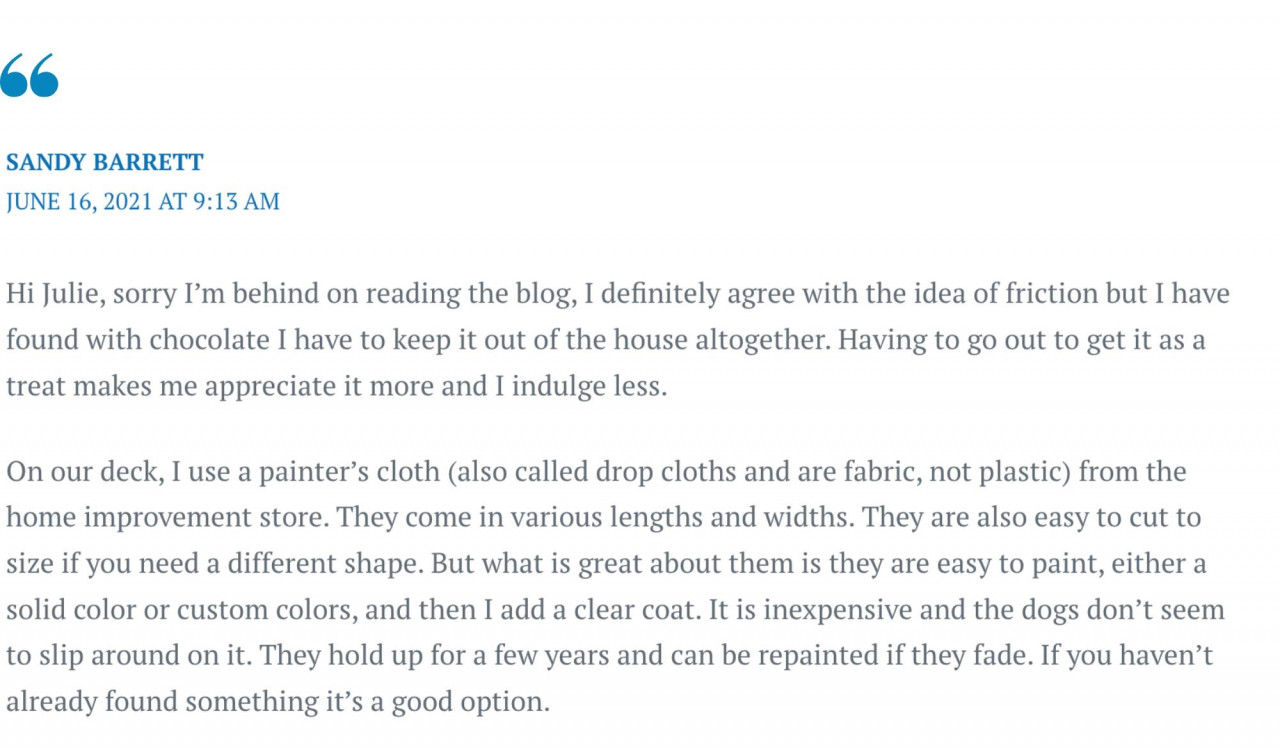

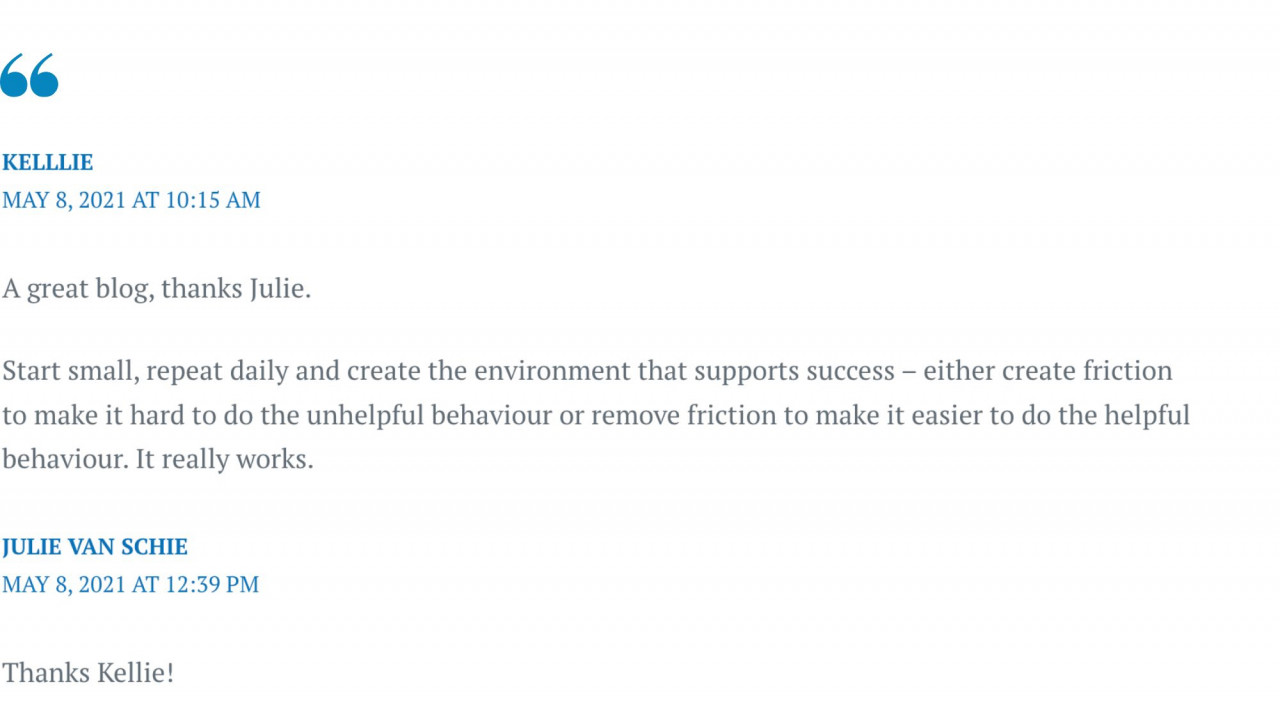


Comments
Never miss a thing!

 Julie van Schie
Julie van Schie 



